There is something so exciting about growing a houseplant directly in water. Many houseplants love moisture and will happily grow in a vase of water. You can choose to propagate these houseplants in water and then plant them in soil later, or you can leave them in water for the life of the houseplant.
A beautiful glass bottle sitting on a windowsill overflowing with fresh green leaves and filtering the sun is a gorgeous and totally free way to decorate your home. Plus, water propagation is one of the easiest ways to get loads of free houseplants!
Let’s explore the many types of houseplants that grow in water.
1. African Violet
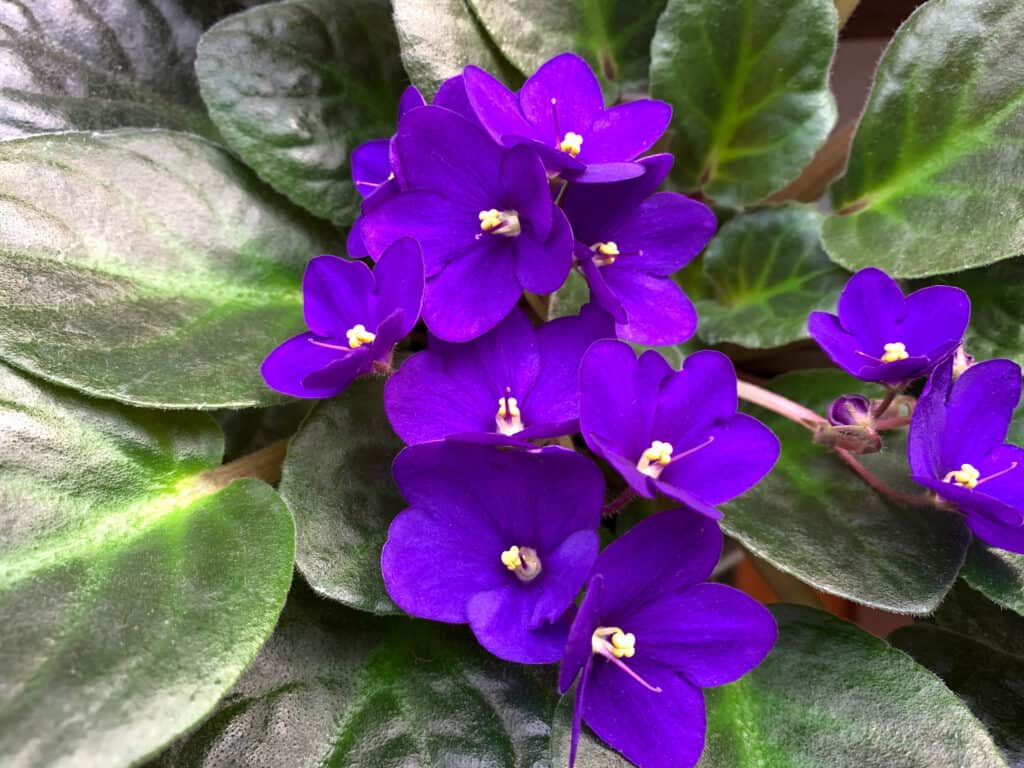
African violets are usually a deep, stunning purple color.
©Lapa Smile/Shutterstock.com
African violets are easy to propagate in about any manner, including in water. Cut a few healthy leaves and put them in a shallow water vessel, and you will soon see tiny roots forming. Be sure to keep the leaves above the water line. If left in the vase long enough, a whole new plant will form with its own tiny crown.
You can choose to transplant this new African violet into a pot of soil and start the whole process over again for an endless supply of free African violets. One important thing to mention is that a multi-colored African violet grown in water sometimes yields a different-colored plant from the mother.
2. Baby’s Tears
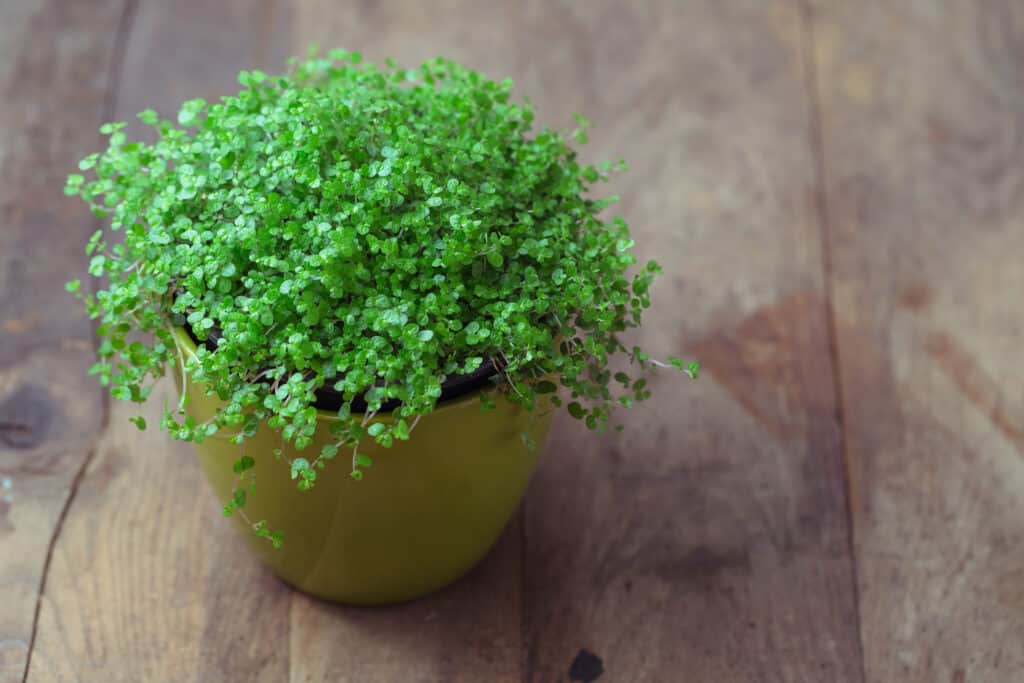
Baby’s tears plants enjoy constant moisture.
©iStock.com/gojak
If you’ve ever grown a baby tears plant, then you know they enjoy constant moisture, which can be frustrating to achieve in a pot. The good news is that baby’s tears grow in water!
If you pinch off a small cluster of stems and place them in a narrow vase, you will see roots forming very quickly. Be sure that you pinch off any leaves from the submerged area of the stem; you don’t want rotting leaves in your water. Change the water frequently to provide oxygen to your plant, and it will thrive and grow happily.
3. Begonia
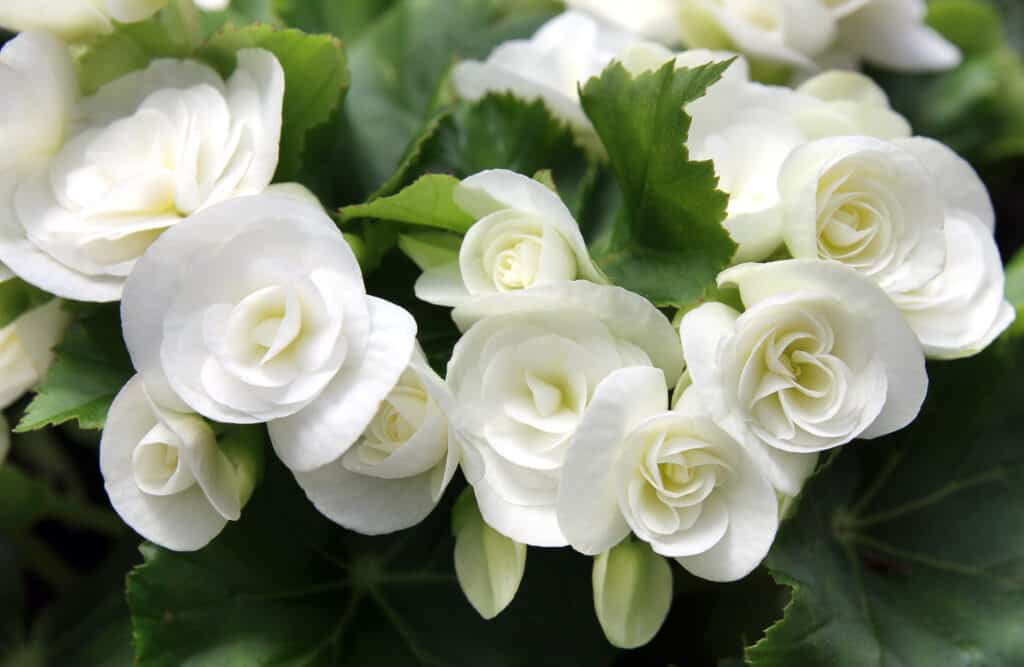
Begonias root very easily in water.
©Opachevsky Irina/Shutterstock.com
Believe it or not, only a single begonia stem is needed to create a new plant. Begonias root very easily in water, especially the hardy wax begonias with knobby nodes at each leaf. Rex begonias might take a few tries, but they can also be successfully grown in water.
The success rate for begonia propagation in water is around fifty percent, so clip twice as many of those thick, succulent stems as you actually need. Don’t be discouraged by the time it takes; it commonly takes sixty days or more for a begonia to root in water.
4. Coleus

Coleus plant leaves come in many colors, including pink, red, and green.
©EQRoy/Shutterstock.com
There are dozens of cultivars of coleus in garden centers and nurseries. They come in almost every color of the rainbow now, and guess what? They all grow in water! This is good news, as some of these tropical plants are getting very expensive, and plant lovers welcome an easy way to get free plants.
Take a four or six-inch cutting of healthy growth and submerge it in water. Be sure to pinch off any leaves from the bottom of the cutting. You will see roots forming in two to three weeks. Coleus plants are heavy feeders, so it helps to add a splash of fish emulsion or other nitrogen fertilizer to the water once per month.
5. Impatiens
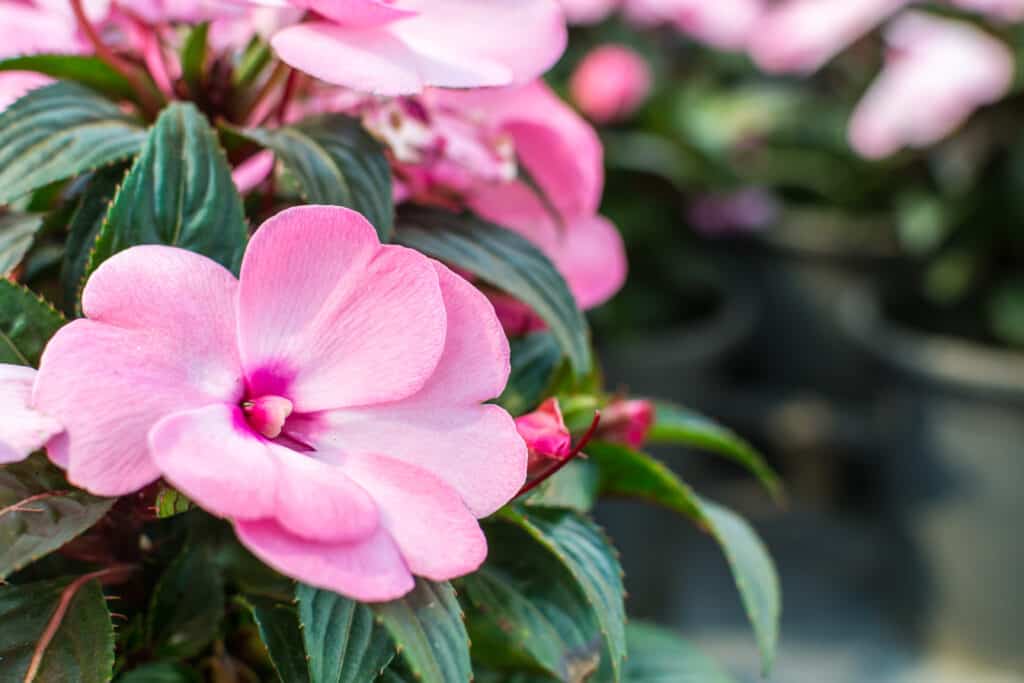
Impatiens naturally grow around the edges of ponds.
©iStock.com/loveischiangrai
Any gardener who has grown impatiens in a pot knows they require frequent watering; sometimes, it is challenging to keep them moist enough in the summer. There is an easy solution to this problem; impatiens grow in water! In nature, impatiens naturally grow around the edges of ponds, so no wonder they love growing in a vase of water.
In the fall, when putting your garden to bed, slice off a few impatiens stems and pinch off the bottom grown. Place the stems in water, and they will grow new roots. Each impatiens propagation is an exact clone of the parent plant, so you don’t have to worry about surprises.
6. Lucky Bamboo
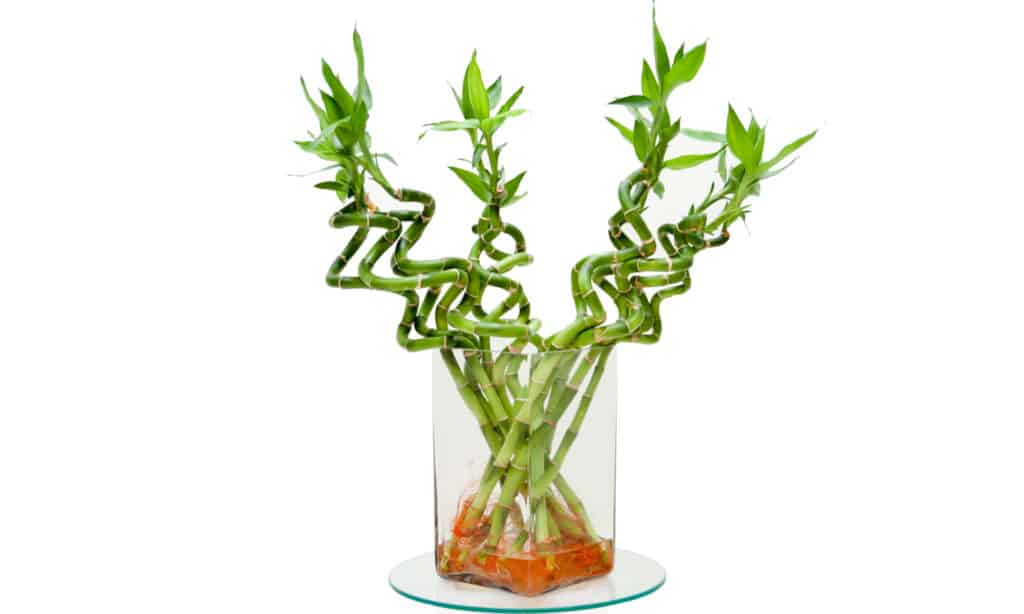
Lucky bamboo grows in water without soil.
©Edu LYRA FOTO E VIDEO/Shutterstock.com
We have all seen lucky bamboo for sale in garden centers and even grocery stores. Lucky bamboo plants are often sold in a vase of water. But did you know they can live in that vase of water without soil forever?
Once your lucky bamboo grows tall enough, you can cut it into several sections and place each one in water. It will slowly form new roots. Then you can train the new top growth into spirals or braids if you wish. If your plant gets top-heavy, you can add a few pieces of gravel to the vase to hold it down.
7. Philodendron
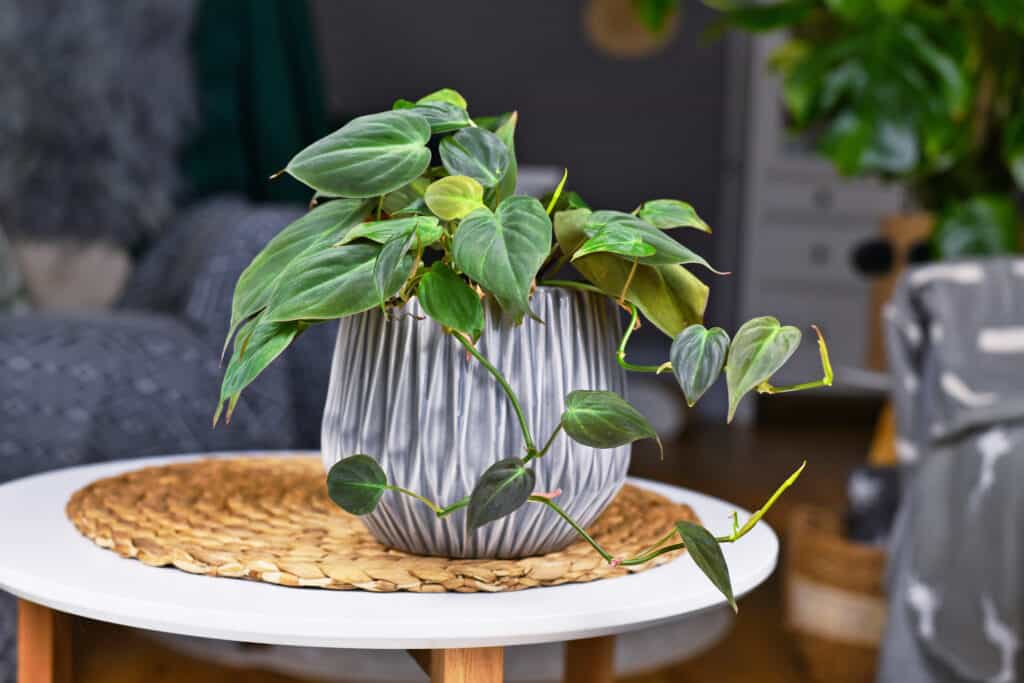
The
Philodendron hederaceumis best suited for tropical environments.
©iStock.com/Firn
Philodendron is another very easy houseplant to propagate or grow in water. If you have a healthy philodendron, you can get many free plants from it to share or spread throughout your house. If you want a healthier plant, provide brighter light. Philodendrons will adapt to low light levels, but they won’t thrive there.
Cut each stem at the point one or two inches below where the leaves meet the stem. You should be able to see a node that looks like a tiny little root. It is a tiny little root! And each one of these nodes will grow roots and turn into a baby philodendron plant.
8. Spiderwort

Tradescantia, also known as the spiderwort, can grow in water.
©iStock.com/Debu Durlav
Spiderworts are one of the most brightly colored houseplants. They come in wide varieties, some with zebra stripes, some with purple or silver leaves. They are very well adapted to indoor living and need only moderate light. And the best news of all is that spiderworts grow in water!
Cut each stem into six-inch long pieces. Strip off the lower leaves and ensure each piece has at least one node (looks like a little baby root), then place it in your water vessel. They root very fast, in less than a week usually. So get ready for lots of spiderwort plants to give away to friends and family this year!
The photo featured at the top of this post is © iStock.com/Firn
Thank you for reading! Have some feedback for us? Contact the AZ Animals editorial team.






